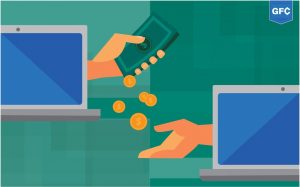Where Incentives Collide: Maintaining Privacy in P2P Lending
By Kyle Redfield | March 10, 2019
Peer to peer lending is a growing channel for borrowing funds. Peer to peer lending apps and websites act as a marketplace for individual borrowers and individual lenders to distribute funds outside typical venues. The concept is simple: a prospective borrower will log into the app and request funds paid back over some duration of time. The app will decide, based on available information about the borrower, an appropriate interest rate for the situation. In reality, the system is a more complex and, depending on your point of view, nefarious.

A 2010 study investigated whether borrowers who offered lenders more of their personal data received more favorable interest rates in return. By investigating about 600 lending projects, they found that, in some cases, releasing more information does tend to lower the borrower’s interest rate. This finding has been supported anecdotally as well. A 2011 legal review of the issues in online lending finds cases where online lenders rigorously interview, request further information from, or otherwise use some fancy Googling to re-identify the originally de-identified borrower.

Perhaps these results are unsurprising. After all, information asymmetry has plagued financial institutions long before the Internet existed. However, as Bohme and Potzsch conclude, it is more often those with economic disadvantages that might seek peer to peer lending solutions. Therefore, “one form of inequality is replaced by another, potentially more subtle one: socially disadvantaged members of society are more likely to act as borrowers and thus are in a worse position to protect their informational privacy” (Bohme and Potzsch 2010). So, while peer to peer lending may promote economic parity, so too does it exacerbate privacy disparity.
But this need not be a tale of outrage and despair. Companies such as Uber or OkCupid have been exploiting the privacy of individuals for the sake of profit without compensation for years. On the other hand, we may be glimpsing into the future of privacy. By receiving lower interest rates or higher probabilities of receiving a loan for disclosing more information, peer to peer lending apps are implicitly compensating its users for disclosing their personally identifiable information (PII).
Increasingly, public expectation has been trending away from any prospect of privacy (take a look at page 86). Just today, my friend proclaimed “I don’t really care that Facebook has my data, I just wish I could get something for it”. Peer to peer lending offers insight into exactly that opportunity. Rather than attempting to regulate and outwit at every turn the massive and intelligent organizations that face every incentive to exploit users’ privacy, governments can acknowledge the long standing tradition of Pareto efficiency. In the spirit of Pareto efficiency, simply by granting one the right to own and sell your own privacy – particularly in the online space – the free market can begin to organize around a new regime.
The cost to the individual may well be trivial for releasing the rights to oneself, but – hey – at least I could get something for it.
Sources:
